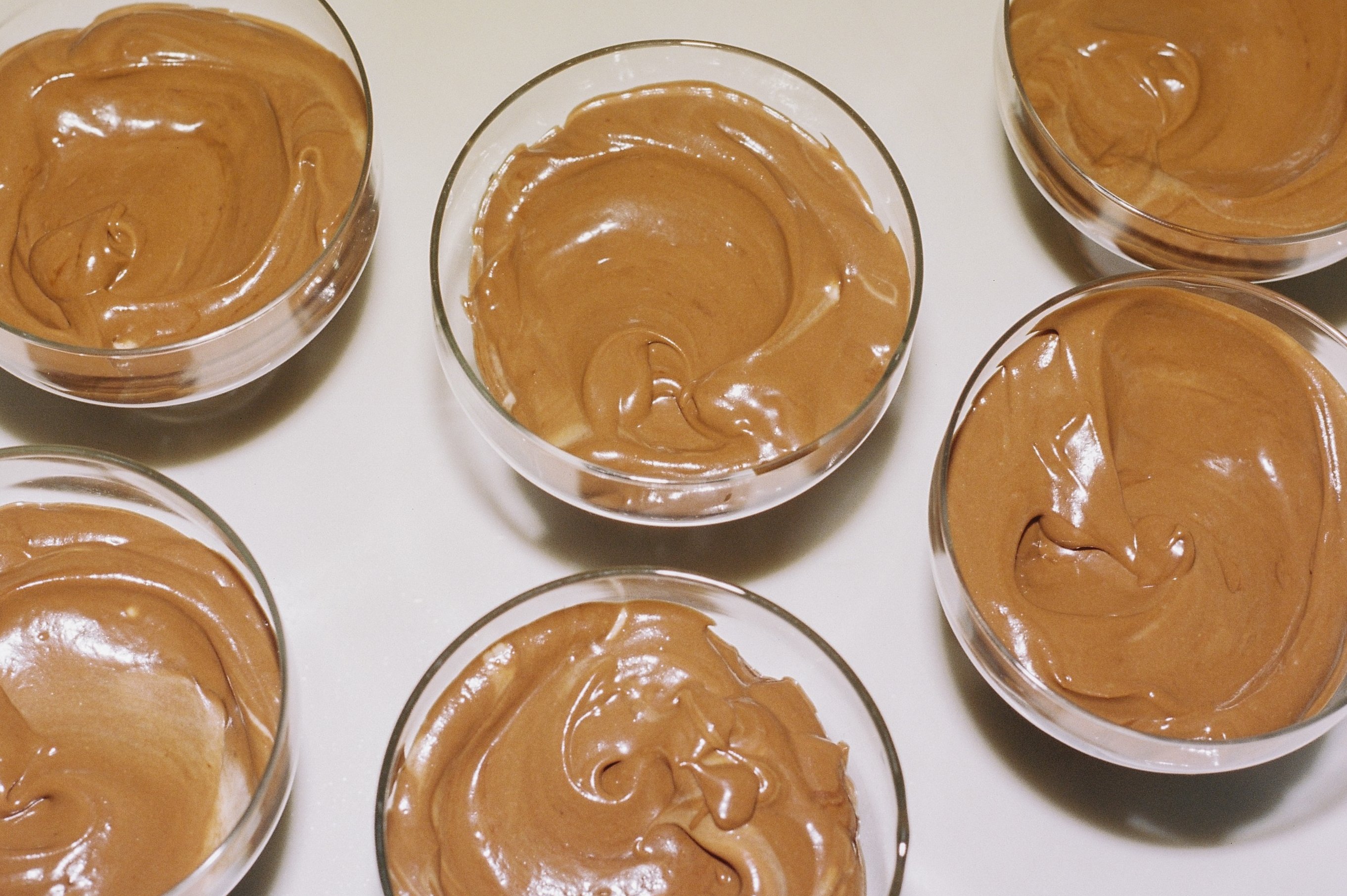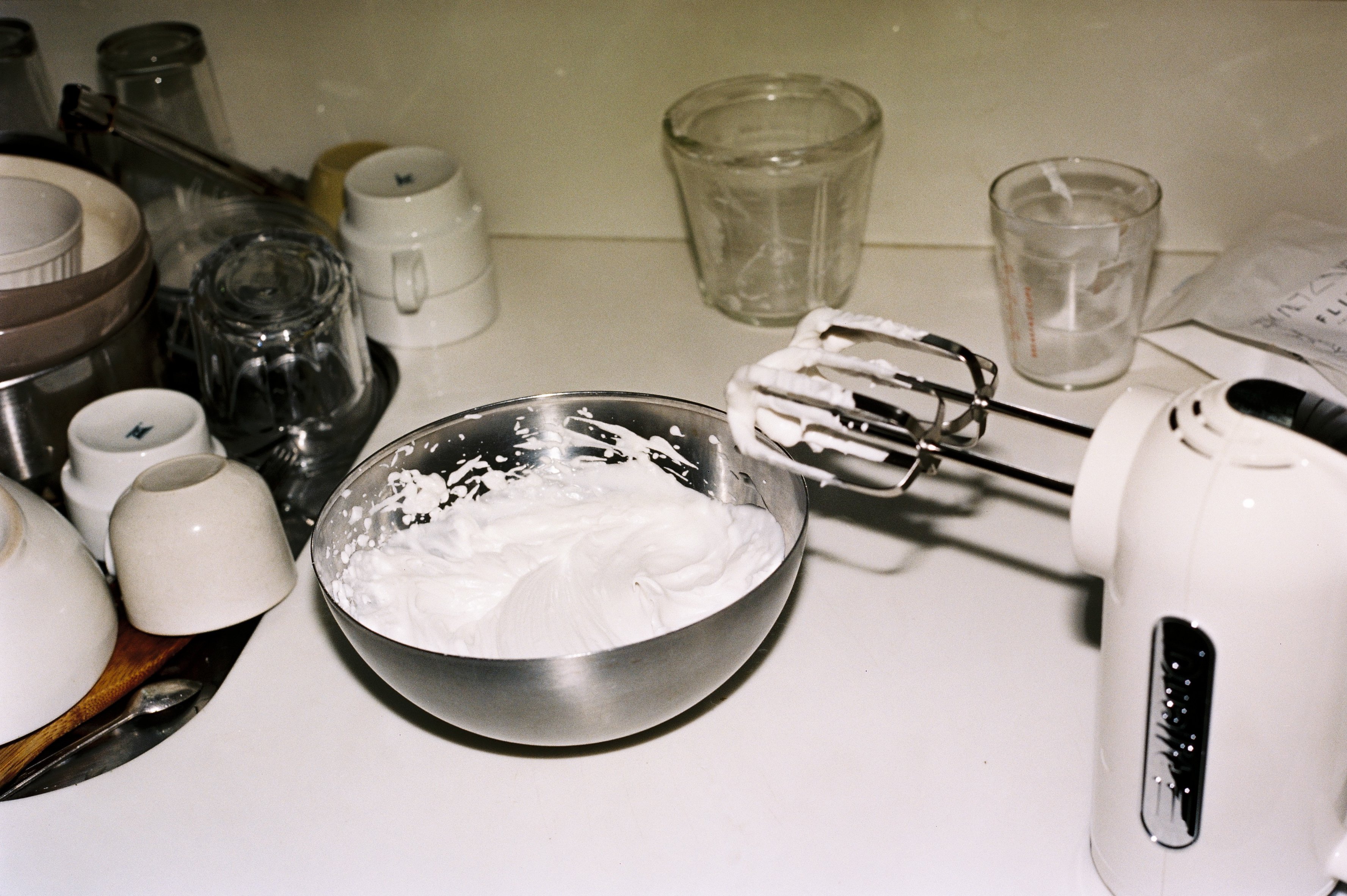Traditionally, mousse is made of very few ingredients— the base, the aerator, the sweetener (which is usually added to the aerator), and the thickener. This reads dairy and eggs, also white sugar, neither of which we are using here. Here we are preparing mousse made by folding aerators into a base. Using coconut cream combined with coconut yoghurt, which is 35 per cent fat with quality dark chocolate removes the need for the sweetener and the setting agent.
While 200 grams seems like a lot of chocolate, this recipe serves many. The unsatisfactory mousse I had made previously, anything using cacao powder cannot produce a firm texture. Magic happens during cooling when the chocolate in within the mousse mixture crystallises. Using less chocolate creates a soft mousse.
The mousse base This is your main flavouring component. And for chocolate mousse, we are using melted, slightly cool chocolate. Therefore, the flavour profile of the chocolate you choose will ultimately provide tasting notes. As previously mentioned, using chocolate removes the need for adding a thickener as chocolate naturally sets up under refrigeration.
The mousse aerator Mousse recipes always contain an aerator, and they often include more than one. Here we are using coconut cream and coconut yoghurt. You begin with the most stable aerator. This is why we are working with the coconut yoghurt first, then the coconut cream. And always use cream with a maximum fat content of 35%. No cans of reduced fat!
Folding At this step, you are folding the aerators into the base. You are not mixing. Ideally, temper your mixture by adding a small amount—about 25 per cent of the coconut mixture to the chocolate and fold to combine. This approach lightens the base, making it easier to incorporate the remaining aerator. Work quickly and minimally. The more you mix, the more you’re deflating each aerator.
Setting Mousse requires refrigeration before it can be served, up to one hour. Eat with a teaspoon. It is rich.








